Wild asparagus is a type of asparagus that grows naturally in places like Western Europe and North America, starting to grow in early spring. It is thinner, more vibrant, and offers a stronger, earthier flavor than its cultivated counterparts. Wild asparagus grows naturally in sandy, sunny environments.
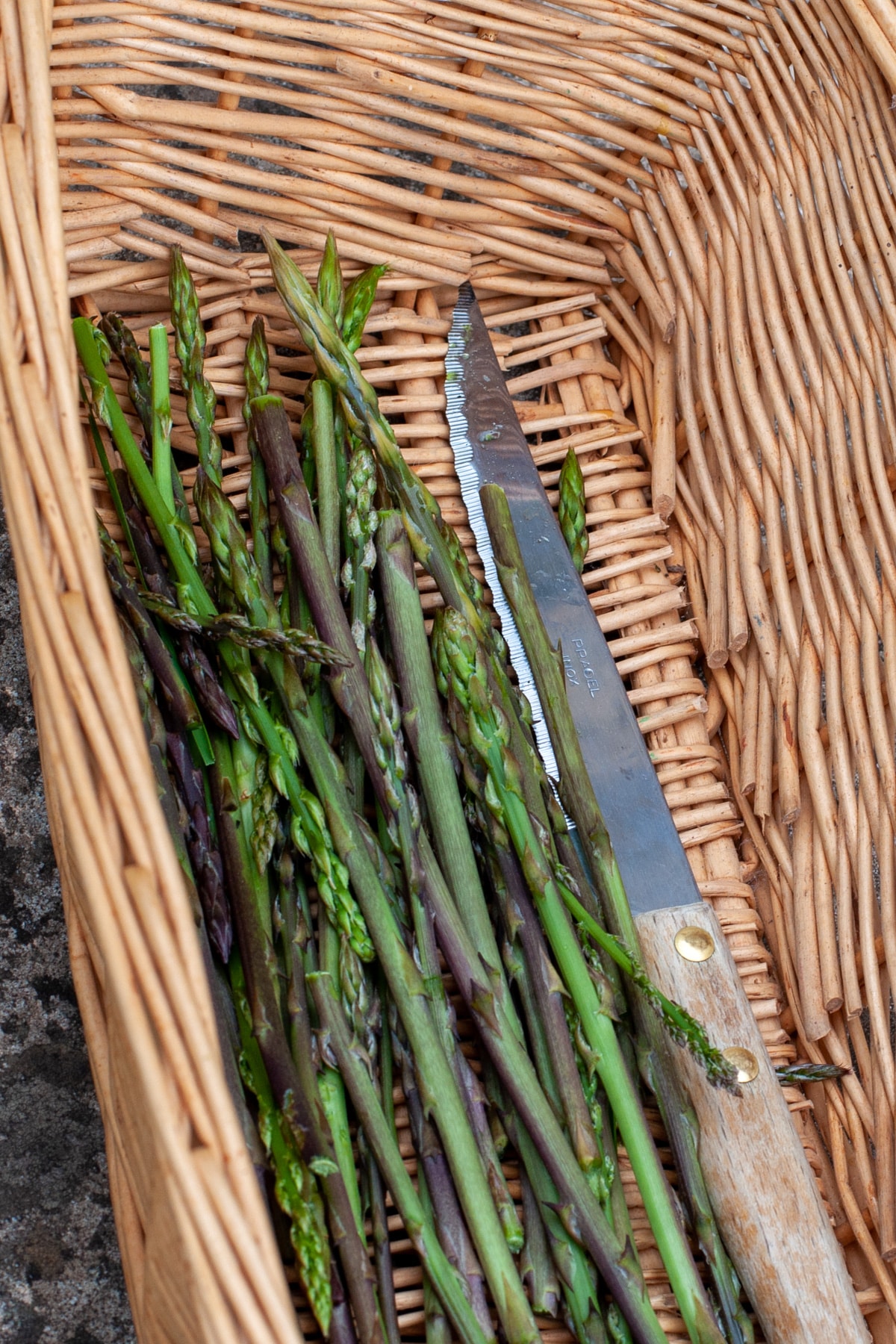
Jump to:
Finding and picking wild asparagus can be a fun activity for those who enjoy walking and exploring nature.
Foraging for wild edibles adds an exciting element to outdoor adventures.
This guide will not only show you how to spot and pick wild asparagus but also how to cook them to bring out their unique flavors.
For more recipes with wild foods, you can check out: how to use dried porcini mushrooms, Wild mushrooms chanterelle and potatoes, crystallized violets.
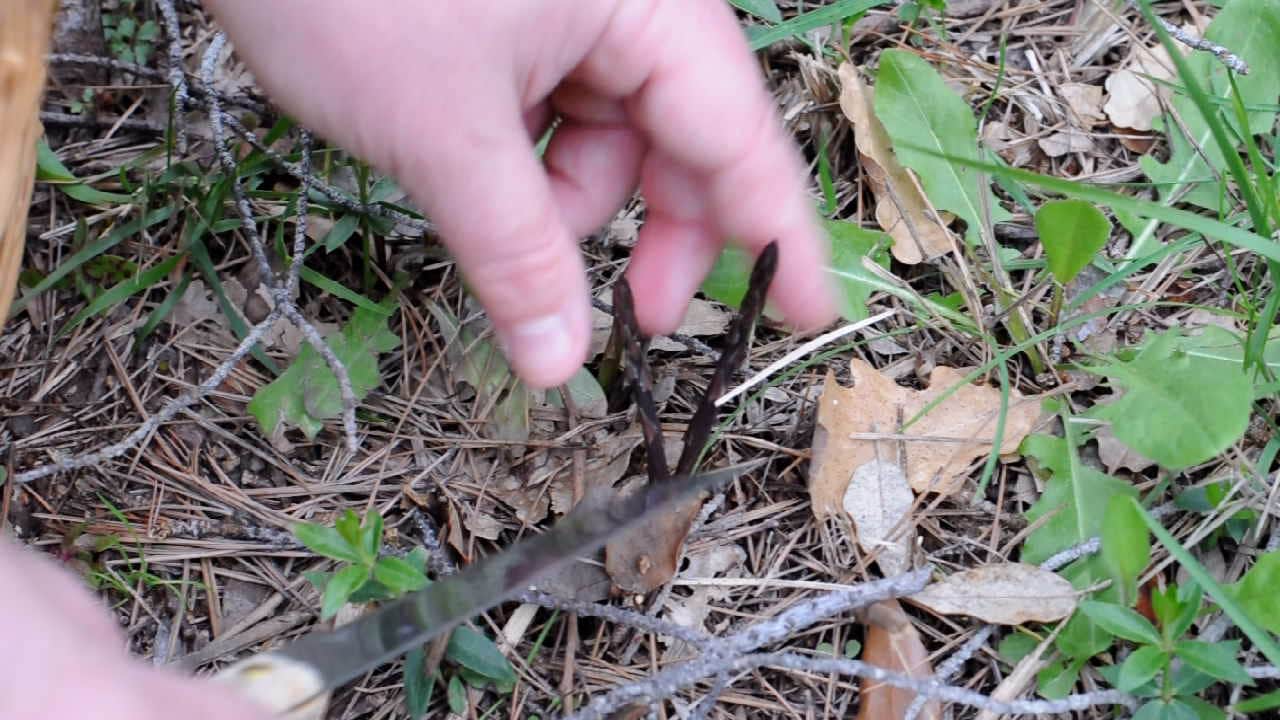
Where to find them
Depending on your local climate, the best time to forage for wild asparagus is during the spring, from April to June.
Asparagus plants thrive in full sun in well-drained soil.
You can often find them near the edges of fields, roadsides, or in open woodlands.
They particularly like sandy soils, so areas near rivers or beaches might be fruitful spots.
Interestingly, I have discovered that the forest next to my house is an ideal environment for wild asparagus.
Thus, with the arrival of spring, I regularly venture out to look for them.

Foraging
When trying to identify wild asparagus, it's crucial to know what it looks like to avoid confusion with other plants.
Spears of wild asparagus are typically thin and green, sometimes with a purplish tint at the tips.
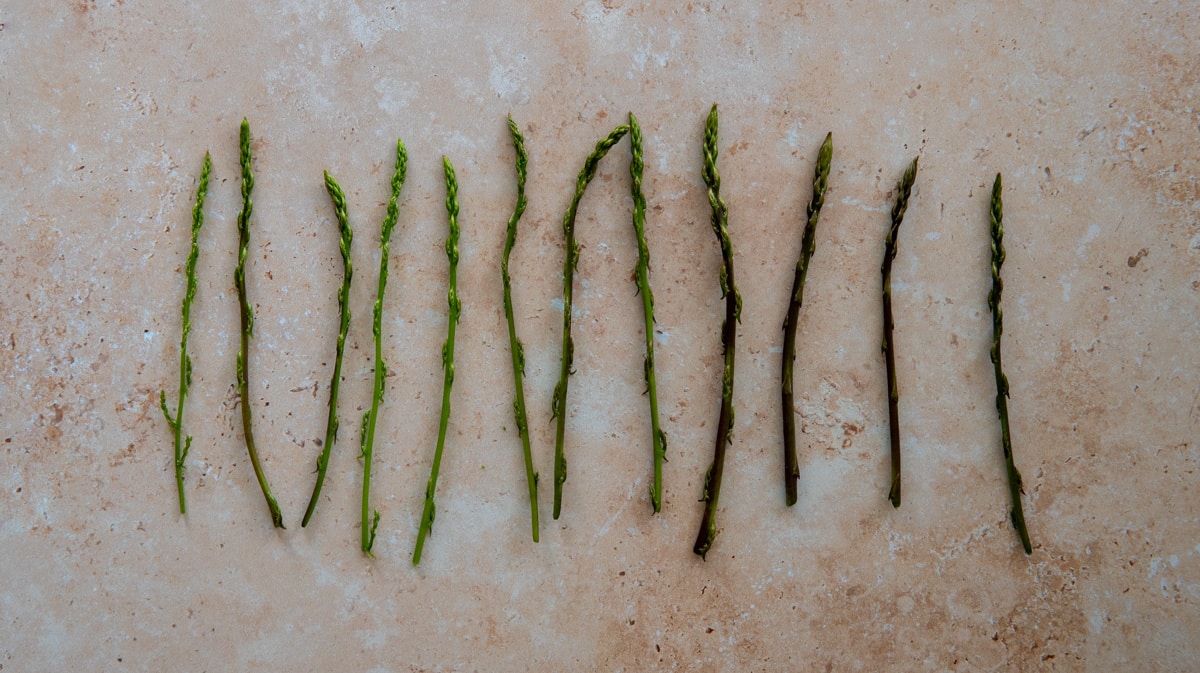
As the asparagus season progresses, you might also spot the feathery, fern-like foliage of mature plants, which indicates that asparagus is nearby.
To ensure you're picking the correct plant, look for other asparagus in the area that has already sprouted.
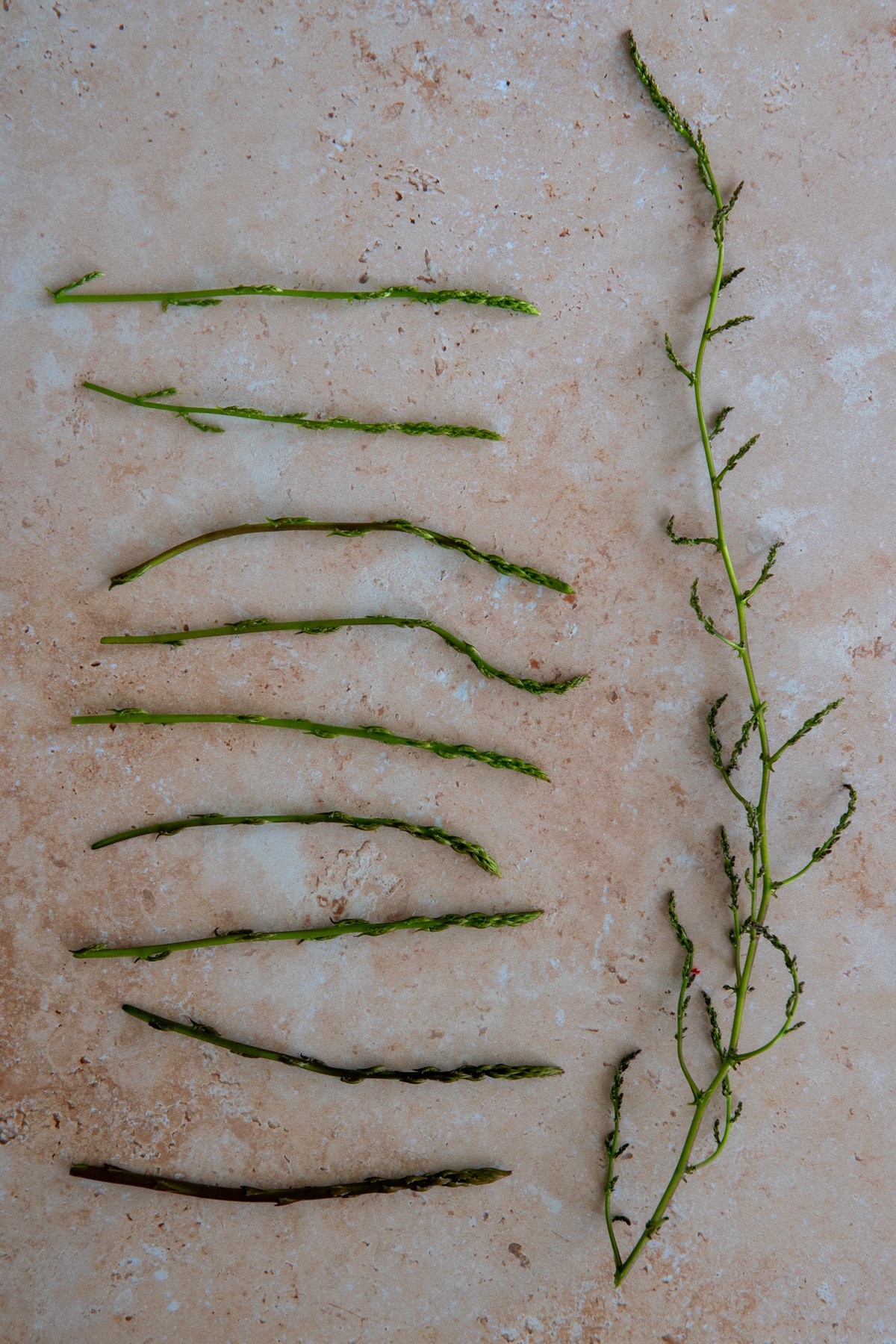
These are clear indicators that what you've found is indeed wild asparagus stalk and not a look-alike.
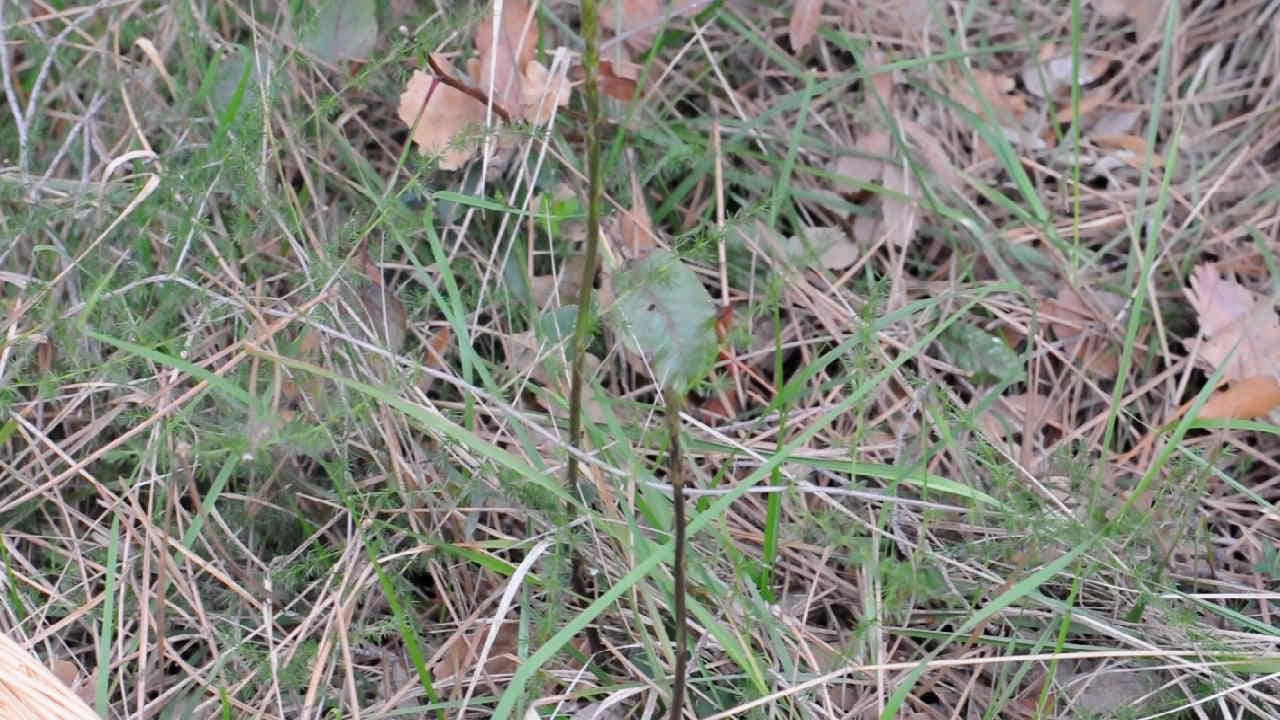
Only harvest what you need, leaving enough behind for the plant to regrow and for others to enjoy.
Do not harvest short spears; you can always go back the next day.

Use a knife or scissors to cut the tender spears gently at the base of the plant above the soil to avoid damaging the plant.
What to bring:
- A sharp knife or a pair of scissors for clean cuts.
- A basket or cloth bag for your harvest.
- Protective gloves and appropriate clothing for the outdoors.
- A guidebook or an app to help identify plants if you're still learning.
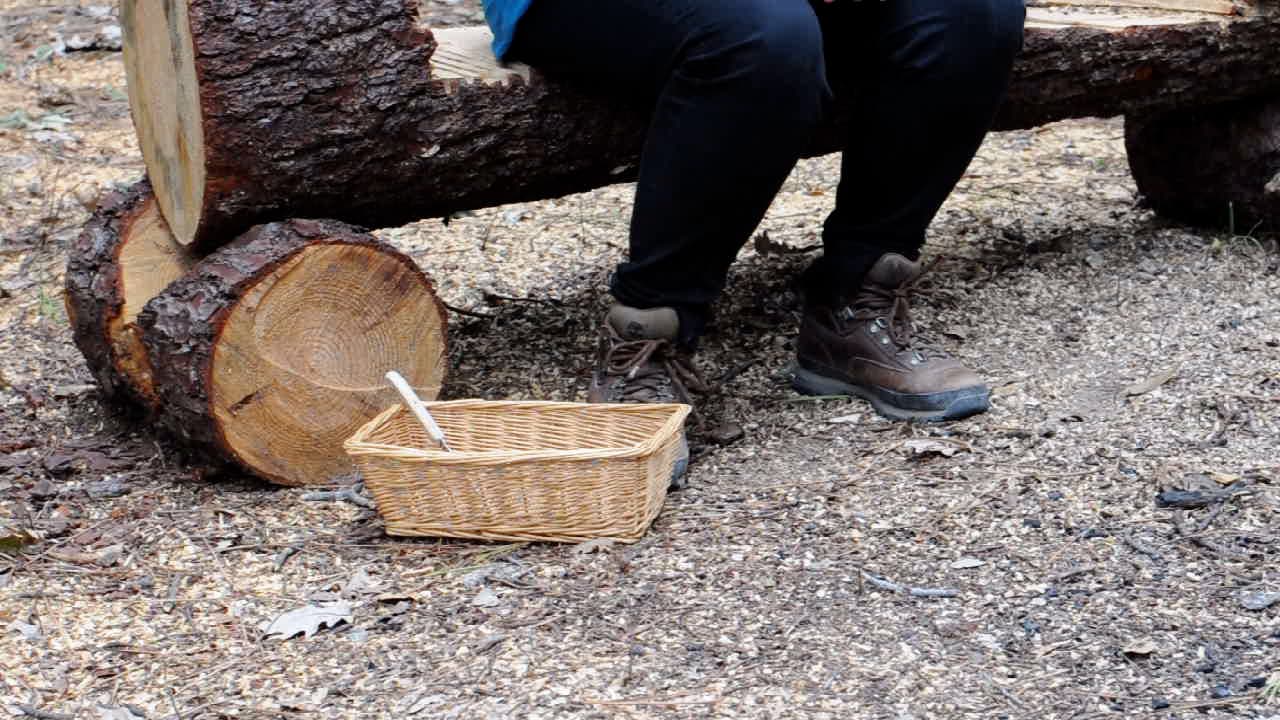
Cleaning
Once you've harvested your wild asparagus, the first step is to clean them properly to ensure they're ready for cooking. Here's how to do it:
- Rinse Under Cold Water: Hold the asparagus under cold running water to wash away any dirt or debris. Be gentle to avoid damaging the spears.
- Pat Dry: After rinsing or soaking, gently pat the asparagus dry with a clean kitchen towel or paper towels. This helps to remove any excess moisture that could make them soggy.
- Trim Ends: Use a knife to trim off the tough, woody ends of the asparagus spears. These parts are often not pleasant to eat due to their fibrous texture.

Cooking
Due to their delicate and thin stalks a gentle steaming process in the microwave is quick and preserves the natural qualities of the asparagus:
- Clean the asparagus and place them standing up in a tall glass or microwave-safe container.
- Add 1 cm ( ½ in) of water to the bottom, just enough to cover the base without submerging the asparagus.
- Cover the glass or container with a microwave-safe cover, leaving a small opening for steam.

- Microwave on high for about 3 minutes, adjusting time as needed based on your microwave's power and the thickness of the asparagus.
- Carefully remove the cover to prevent steam from building up. Test the asparagus with a fork; it should be tender but still slightly crisp.
- Drain the water and serve the steamed wild asparagus hot or add them to your recipes.
If you do not have a microwave you can do the same with a regular steamer.

How to serve them
Wild asparagus has a distinct taste compared to its cultivated counterpart.
It offers a more pronounced, earthy flavor, with a hint of nuttiness and a slightly more intense grassy note.
The wild variety tends to be less fibrous and more tender, allowing for a richer taste.
Here are some simple and gourmet Recipes:
- Steamed Wild Asparagus with extra-virgin olive oil: This is a simple, elegant dish that requires steaming wild asparagus as described earlier, then tossing it in extra-virgin olive oil with a squeeze of fresh lemon juice and a pinch of salt.
- Wild Asparagus Omelet or scrambled eggs: Beat the fresh eggs and pour them into a heated, oiled pan, adding chopped wild asparagus, salt, and pepper. Cook until the eggs are set for a quick and flavorful meal. Serve them with rustic bread, a sprinkle of Parmesan, or a light salad. For a healthier option you can make a baked frittata.
- Wild Asparagus Risotto: Steamed wild asparagus is incorporated into a creamy risotto. This dish requires patience and stirring but rewards you with a luxurious meal. Add the asparagus at the end when the risotto is mantecato so the heads do not break.
- Wild Asparagus Tart: A more ambitious recipe that combines the flavors of wild asparagus in a rich quiche on a flaky pastry base, perfect for impressing guests.
You can also pair them with crispy bacon, smoked salmon, or cherry tomatoes, to add variety and cater to different tastes.

Top Tips
To preserve their flavor and texture I recommend the following tips:
- Gentle Cooking: To maintain the delicate flavor and tender texture of wild asparagus, avoid overcooking. Steaming or quick sautéing are preferred methods.
- Seasoning: Wild asparagus’ natural taste is best highlighted with minimal seasoning. A bit of salt, pepper, and perhaps a drizzle of olive oil or a squeeze of lemon is all that’s needed.
- Pairing: When incorporating wild asparagus into dishes, pair it with ingredients that complement its robust flavor without overpowering it. Light cheeses, eggs, and mild herbs are excellent choices.
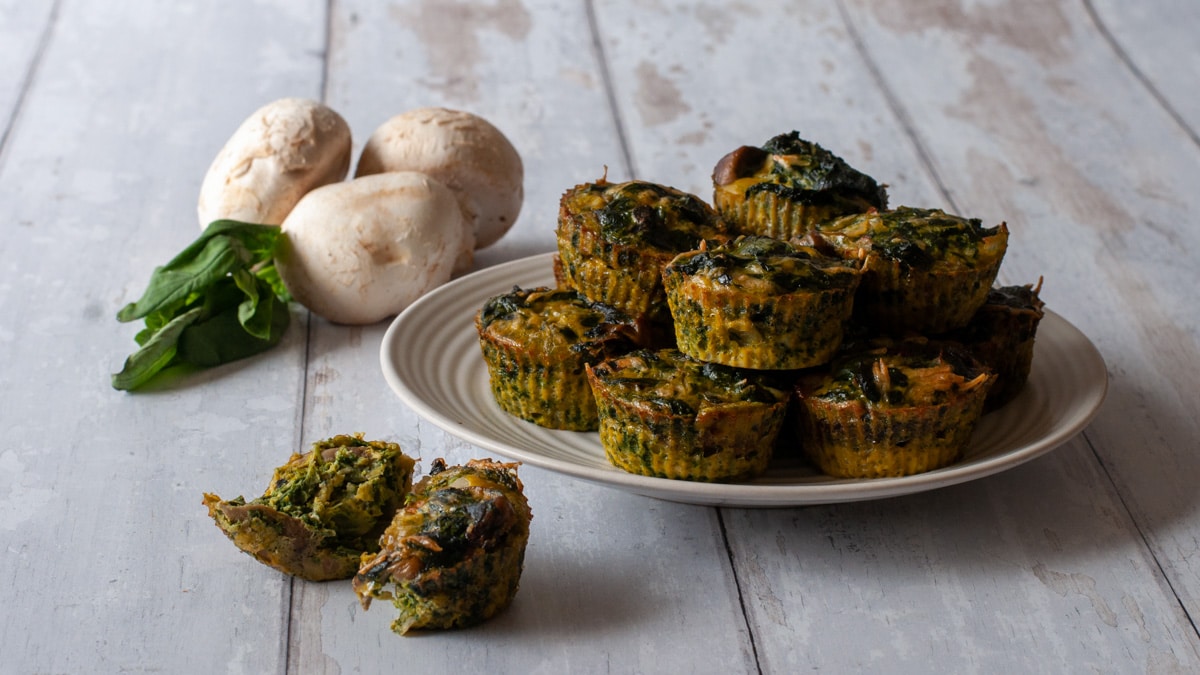
Wild asparagus mini flan
If you're looking to create something truly special that showcases the delightful flavors of wild asparagus, our Wild Asparagus Flan recipe is a perfect choice.
This exquisite dish beautifully combines the earthy tones of wild asparagus with a harmonious blend of carrots and cheese, making it an ideal addition to any springtime meal.
Whether you're planning a sophisticated starter for a dinner party, setting up a stunning buffet table, or packing for a spring picnic, these mini flans are versatile and sure to impress.
The recipe, detailed on the recipe card below, guides you through creating these culinary gems with ease.
Serve them warm or at room temperature, filled with fresh tomatoes or a filling of your choice, alongside a fresh salad for a complete and utterly satisfying experience.

More eggs and vegetable starters
If you like this recipe and would like to make a buffet with more vegetable starters, here are some ideas:
If you are making these wild Asparagus flans leave your comment below I would like to hear from you. You can find more delicious ideas if you FOLLOW ME on Facebook, YouTube, Pinterest and Instagram or sign up to my newsletter.

📋Wild Asparagus Flans
Ingredients
- wild asparagus any amount you fetch
- ¾ cup butter 5 oz (at room temperature)
- 4 fresh eggs
- 3 boiled carrots
- 1 cup flour
- 1 teaspoon baking powder
- ½ cup freshly grated Parmesan
- 1 teaspoon salt
- ½ cup breadcrumbs for coating
- olive oil for coating
Equipment
Instructions
Pre-steam the asparagus
- Wash the asparagus and cut 10 cm lengthwild asparagus
- Put them vertically in a glass with 1 cm ( ½ in) of water
- Steam them covered in the microwave for 3 minutes.
Prepare the moulds
- Coat the moulds with oil and crumbs½ cup breadcrumbs, olive oil
- Lay the asparagus in the bottom of the moulds
Make the batter
- Mix the butter until it is creamy¾ cup butter
- Add 4 eggs and mix4 fresh eggs
- Add the boiled carrots and mix3 boiled carrots
- Sift the flour with the baking powder and mix all together1 cup flour, 1 teaspoon baking powder
- Last, add the cheese and a teaspoon of salt½ cup freshly grated Parmesan, 1 teaspoon salt
- Pour the mix into the moulds
- Bake for 30 minutes in a hot oven at 180 C - 355 F
- Let them rest for 5 minutes then turn them upside down and fill the holes with fresh tomatoes or any other fillings you like
- Serve warm or at room temperature.
Video
Notes
- Wild asparagus can be found in the Mediterranean climate from late february till April
- They are much smaller and thinner than the regular asparagus. Their flavour is a concentration of asparagus and perfectly combines with egg and Parmesan.
- Wild asparagus are very small, thin and tender, you can either steam or stir fry them. I quickly steam them in the microwave
- There are many other ways you can serve wild asparagus.
- Use them in frittata or risotto.
- Season with extra virgin olive oil and serve with any matured cheese and/or bacon.
- Or simply mix them in a salad.
Nutrition
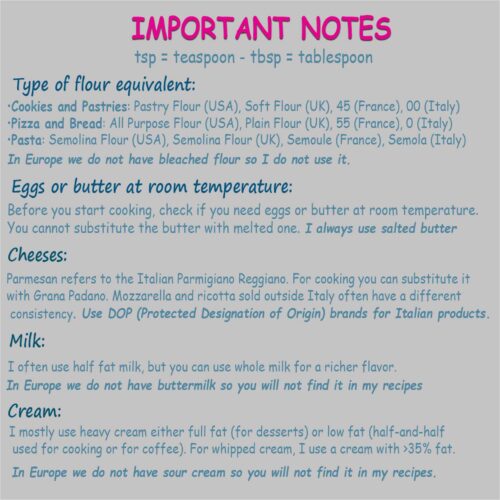










Ramona
Oh, waw. I’d love to venture a little with a little basket around the Côte d’Azur forests. Heavenly experience.
I don’t think I’ve ever had wild asparagus and I’m sure it tastes amazing. I absolutely love combining egg with asparagus and Parmesan and this recipe sounds pure perfection that I must try. Thank you so much for sharing this delicious recipe.
Laura
I am glad you like them Ramona, I love this time of the year when I can go and fetch my asparagus
Jacqueline Debono
It's so wonderful to be able to go out and forage for ingredients and then cook with them! I love wild asparagus and these flans are amazing. I have muffin trays but I really need to get some mini bundt molds. Your flans look fabulous!
Laura
Thank you Jacqui, you must make one of your pasta with them